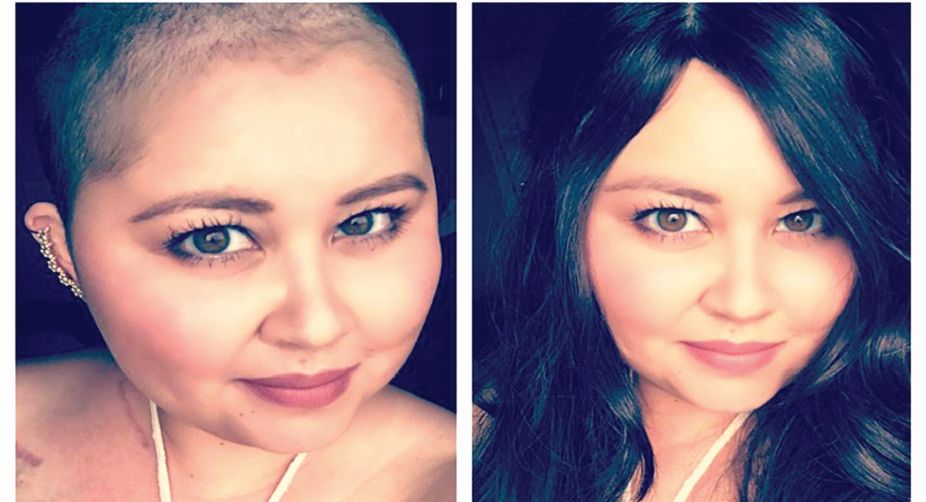Extensive efforts underway to prevent cancer: Saini
Haryana Chief Minister Nayab Singh Saini has said that cancer is a serious illness, but if its symptoms are detected early, treatment is possible.
Wigs, in popular culture, disrupt our stock ‘story’ about cancer being an occasion for what has been called ‘post-traumatic growth’

Cancer Wig.
Cancer is an experience that is now part of everyday life, a familiar celebrity confession, and a stock plotline in blogs and vlogs, published memoirs, TV series, and on the big screen.
Such stories are important, because they help patients and relatives tell their own experiences of the disease, and its effect on their lives. But what is most important is diversity in cancer stories, to avoid patients’ alienation when living, and coping, with cancer.
Advertisement
Tropes about tumours and plots about being a cancer patient are now more globalised than ever before. Cancer research is international, as it must be. But stories on the page and screen are becoming more similar throughout the world as they are produced, marketed and translated by multi-national organisations.
Advertisement
This convergence of storylines leads to set scripts about cancer — for example, the idea that cancer survivors not only make a choice to live but that it is a positive affirmation of their future lives.
The battle against cancer turns into a chance for renewed self-discovery and development that is couched in moral terms — the opportunity to become not simply a different, but in some regard, a better person.
Critics in cancer studies have remarked on this development since the 90s. The crucial question is whether we can find alternative stories that run counter to this trend.
One of the most famous — and self-consciously fabulous — early mainstream portrayals on TV that can also be called “critical” was the sixth season of the hit American television show Sex and the City (2003-2004), in which Samantha undergoes chemotherapy and loses her hair. It inspired a host of other stories that follow similar plots.
Sophie van der Stap’s Dutch memoir, Meisje met negen pruiken (2006, translated as The Girl with Nine Wigs, 2015), for instance, is about a girl who is diagnosed with rhabdomyosarcoma at the age of 21. The book tells of Sophie buying different wigs, each worn to date different men.
She takes her cue from Sex and the City, after watching the box set given to her by friends. In this story as in many others, the wigs are sold by rather camp men, giving rise to humorous scenes and theatrical self-reinvention.

The idea of wigs prompting dating, or falling for a new love, has caught on in more “larger than life” cancer stories. Think of Susanne Bier’s bilingual film, in both Danish and English, starring Pierce Brosnan (who lost his first wife to cancer)— Den skaldede frisør, translated into English as Love is All You Need (2012).
Wigs in these programmes, books and films disrupt our stock “story” about cancer being an occasion for what has been called “post-traumatic growth”. It does so in two ways. First, the moral of Sophie van der Stap’s tale is that with or without cancer, girls just want to have fun.
Wigs facilitate flirtation. This gives licence to a problem in the book, namely, that it bolsters stereotypes of women based on their hair colour most crassly. As a redhead, Sophie is supposedly more argumentative; as a blonde, she has the most success with men.
By itself, a flirtatious woman who is “out there” and on the lookout for men is a stereotypical ideal of single, usually youthful, heterosexual womanhood. It supposedly suggests empowerment. In a gender seminar, we would unpack and complicate this idea. But here, we should read such stories — despite their problems — in the context of dominant plot lines about cancer.
The very notion that a patient can be a girl about town, frequenting bars and commanding attention has captured the popular imagination as an unconventional stand against moralising scripts about how to be ill.
This alternative story rails against the idea that illness makes us better people; and in the case of women, that illness should not be a time of sexual activity.
The second way, in which wigs are disruptive, or critically deployed, is that dominant stories about cancer are actually arguments about newness — the new you.
As much as wigs might be portrayed as helping characters develop in new ways, and don new identities, they are also a very real reminder that any radically new post-cancer self is only momentary.
Wigs aren’t permanent replacements for hair, and physically and visually they remind us of what is lost. So some of the most poignant scenes about cancer centre on hair loss and the difficulties it poses for any sort of “linear” life story (from illness to self-betterment, for example). In this sense, comments about can-cer and hair stand in for the experience of cancer as a whole.

The UK journalist Victoria Derbyshire said in an online video that went viral last year, “I have to say that losing my hair was the worst bit about cancer treatment for me. More so than having a mastectomy. Don’t judge me for that, it’s just the way I felt”.
Cultural and gender critics such as myself are well-used to pointing out that popular storylines are stereotypical, or that they buy in to Western, consumerist ideals of beauty and identity that are increasingly becoming global norms. This is certainly the case for Sex and the City, and the spin-off texts and series it has inspired.
But I’ve also learned to view such stories against the rhetoric and popular plots about cancer. Seen from this perspective, they can be critical — and even therapeutically helpful — for some cancer patients (but of course not all of them). Sometimes cultural studies must concern itself with the value of surface, “skin deep” arguments that can all too easily be overlooked.
The writer is with the School of Languages and Cultures, University of Sheffield, UK
Advertisement